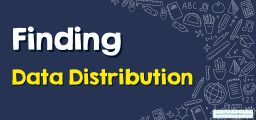How to Decode Data Types
Understanding the various types of data is essential in the field of research, statistics, and data analysis. Data can be observed and recorded in multiple ways, which influences how it can be analyzed and interpreted. Let's explore the main categories of data step by step.

Step-by-step Guide to Decode Data Types
Here is a step-by-step guide to decode data types:
Step 1: Recognize the Two Main Categories of Data
Data is generally classified into two broad categories: qualitative and quantitative.
Qualitative Data (Categorical Data)
Qualitative data, also known as categorical data, is descriptive and conceptual. It can be categorized based on traits and labels, but not measured with numbers.
- Nominal Data: This is data that is used for labeling variables without any quantitative value. It is often referred to as named data because it consists of terms used to distinguish one group from another. For example:
- Colors: Red, Blue, Green
- Types of cuisine: Italian, Chinese, Mexican
- Genders: Male, Female, Other
- Ordinal Data: Unlike nominal data, ordinal data takes into account the order of the values, but the difference between each one is not really known. For instance:
- Educational levels: High School, Bachelor’s, Master’s, Ph.D.
- Satisfaction ratings: Satisfied, Neutral, Unsatisfied
- Economic classes: Lower, Middle, Upper
Quantitative Data (Numerical Data)
Quantitative data is numerical and can be measured. This type of data can be further classified into discrete and continuous data.
- Discrete Data: This type of data can be counted and has a finite number. It often involves integers or counts that are not divisible. Examples include:
- The number of students in a class
- The number of cars in a parking lot
- The number of languages a person speaks
- Continuous Data: Continuous data can take on any value within a given range and can be divisible into finer parts. This data is often measured rather than counted. Examples are:
- Heights of people
- Temperature readings throughout a day
- Distances between cities
Step 2: Understanding Primary vs. Secondary Data
Beyond the qualitative and quantitative classification, data is also categorized based on how it was collected.
- Primary Data: This is data that you collect yourself using surveys, experiments, interviews, etc. It is raw and directly collected from the source. This type of data is highly reliable and tailored to the researcher’s specific needs.
- For instance, customer feedback is collected through a questionnaire for a new product.
- Secondary Data: This type of data is collected by someone other than the user. It is not collected for the specific purposes of the researcher but can be utilized for analysis.
- An example is census data published by the government which can be used by marketers to understand demographic trends.
Step 3: Data Collection Methods
The method of data collection will influence the type of data and the potential insights that can be gleaned from it. For example:
- Observations can yield both qualitative (behaviors, physical characteristics) and quantitative data (number of times a behavior is observed).
- Questionnaires and surveys can produce both qualitative (opinions, descriptions) and quantitative data (rating scales, yes/no questions).
Step 4: Data Usage in Analysis
Depending on the type of data, different statistical methods are applied:
- For Qualitative Data: Analysis is typically non-numerical and might include identifying patterns, themes, or categorization.
- For Quantitative Data: Numerical analysis techniques are used, such as descriptive statistics for mean, median, and mode, or inferential statistics for hypothesis testing.
Step 5: Data Interpretation
Interpreting data involves making sense of the information gathered. The type of data dictates the form of interpretation:
- Qualitative data is often subject to thematic analysis to extract meanings and patterns.
- Quantitative data uses statistical analysis to draw conclusions or predict trends.
Final Word
A clear understanding of the types of data is crucial for any researcher or analyst. Qualitative data helps in understanding the qualities, attributes, and labels of elements in a dataset, while quantitative data provides a numerical backbone that can be measured and analyzed using statistical tools. Primary data offers a focused and first-hand perspective, whereas secondary data provides a broader context that can enrich the analysis. Together, these types of data form the basis of robust research and analytical work, leading to informed decisions and meaningful conclusions.
Examples:
Example 1:
What type of data is “customer satisfaction rating”?
Solution:
Customer satisfaction rating is ordinal data, as it represents categories with a specific order or rank, typically ranging from ‘very unsatisfied’ to ‘very satisfied’.
Example 2:
What type of data is “time taken to complete a task”?
Solution:
The time taken to complete a task is continuous data, as it represents infinite possible values within a range that can be measured to any desired level of precision.
Related to This Article
More math articles
- What Is a Monomial?
- Using Number Lines to Represent Decimals
- A Comprehensive Collection of Free CLEP College Mathematics Practice Tests
- The Ultimate TExES Core Subjects Math Course (+FREE Worksheets & Tests)
- Top 10 Tips to ACE the SAT Mathematics
- Top 6 Travel-Friendly Teaching Supplies for your Portable Classroom
- 6th Grade FSA Math Worksheets: FREE & Printable
- 6th Grade PARCC Math Worksheets: FREE & Printable
- How to Master Polynomial Functions: A Comprehensive Guide to Understanding and Solving Complex Zeros
- 8th Grade FSA Math Practice Test Questions


















What people say about "How to Decode Data Types - Effortless Math: We Help Students Learn to LOVE Mathematics"?
No one replied yet.